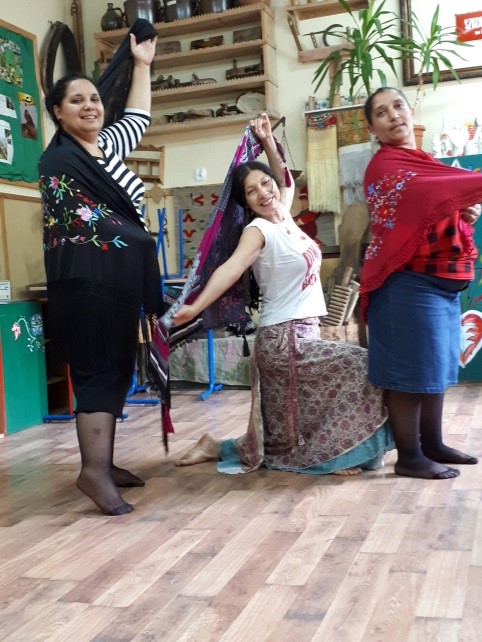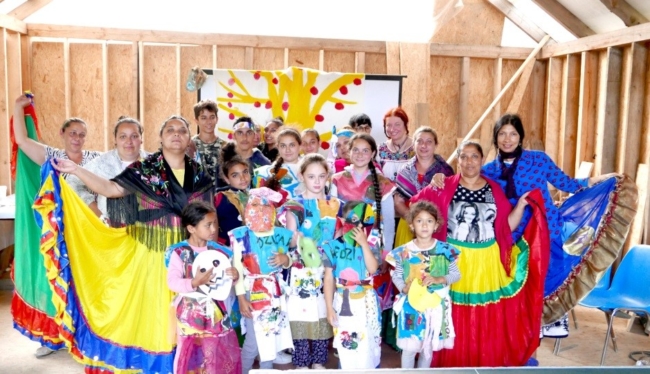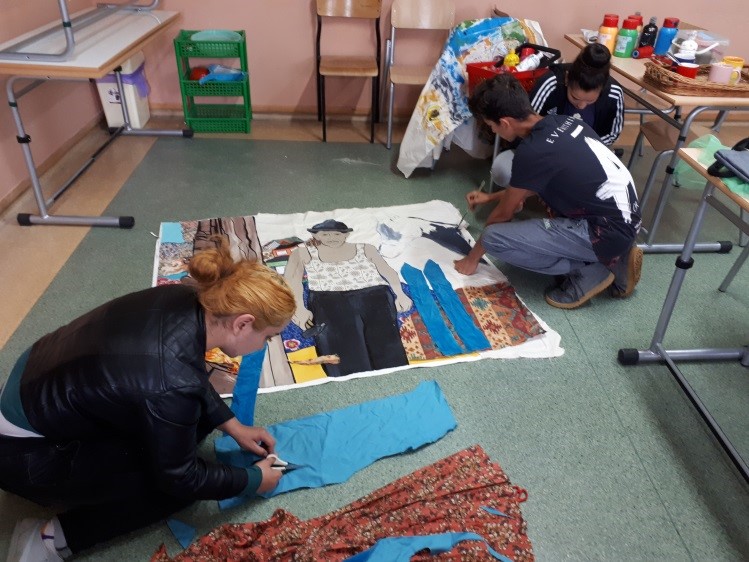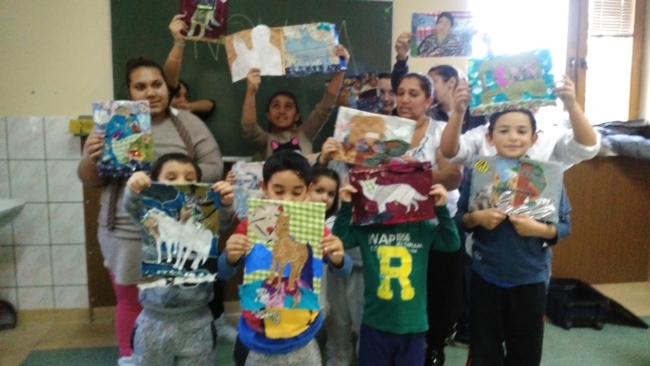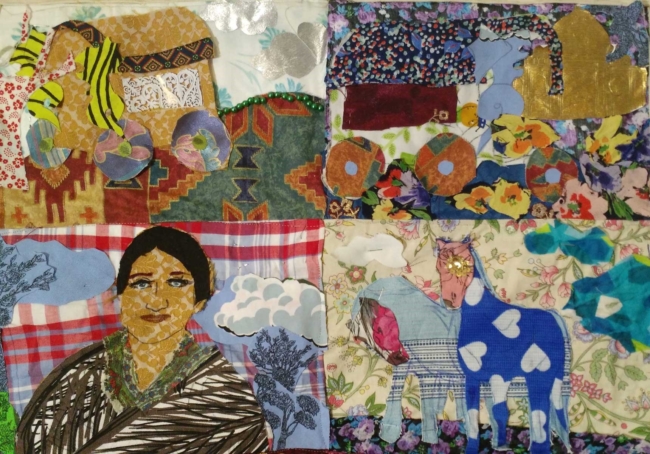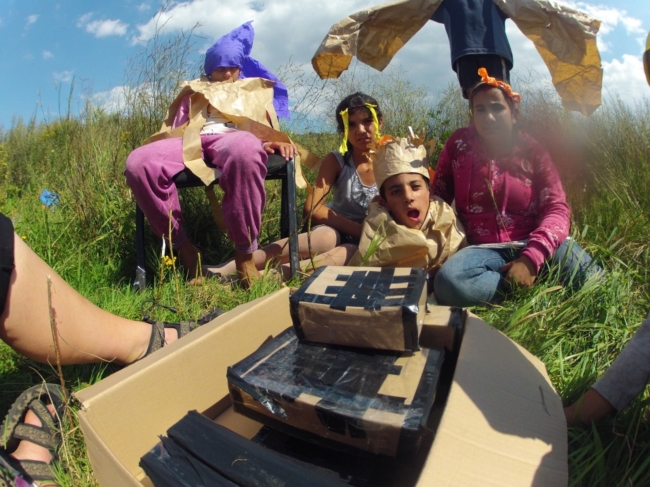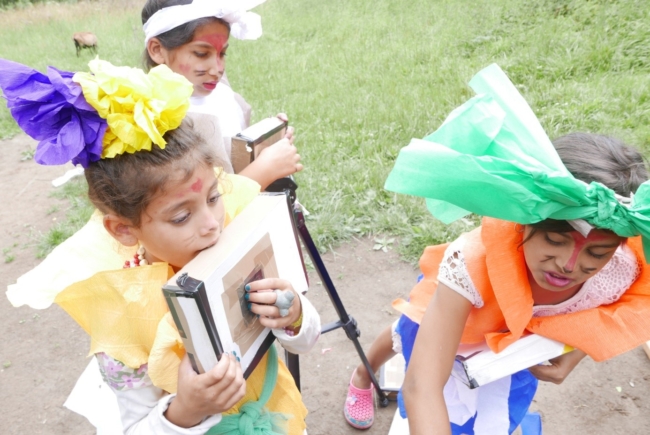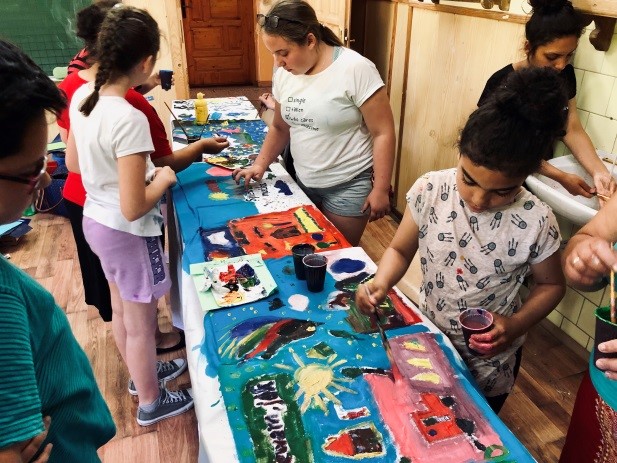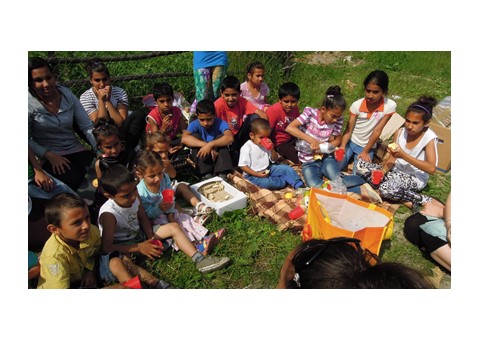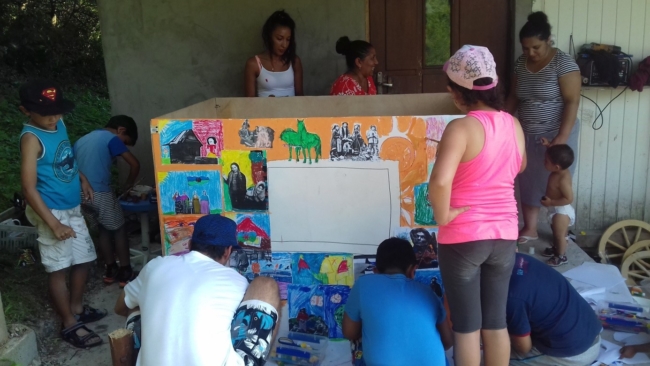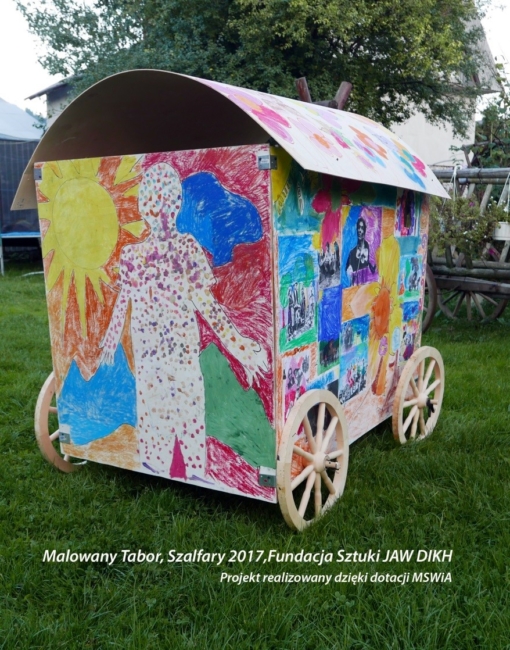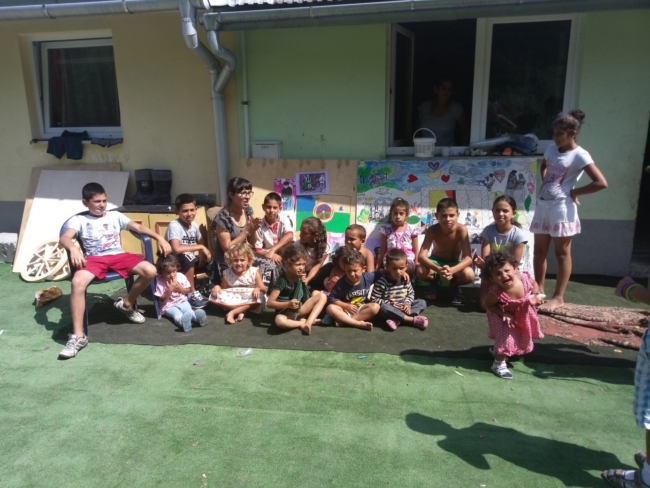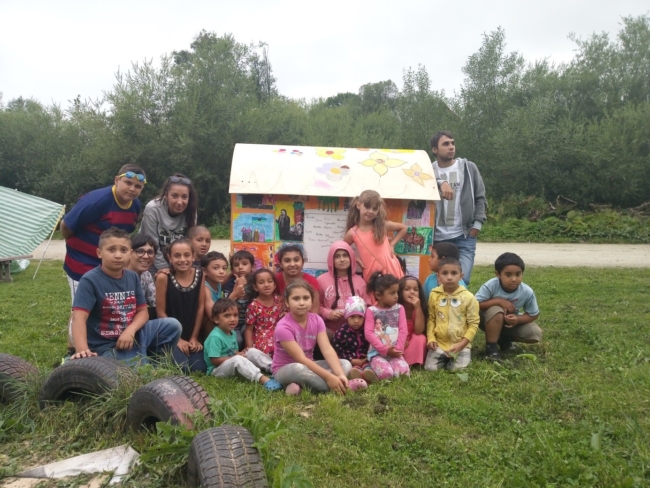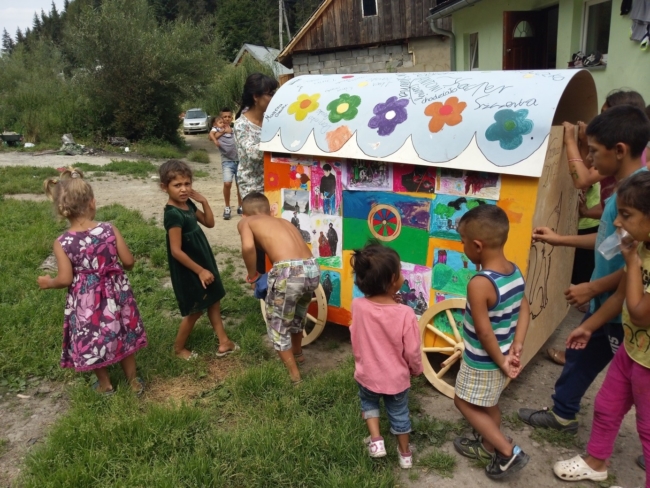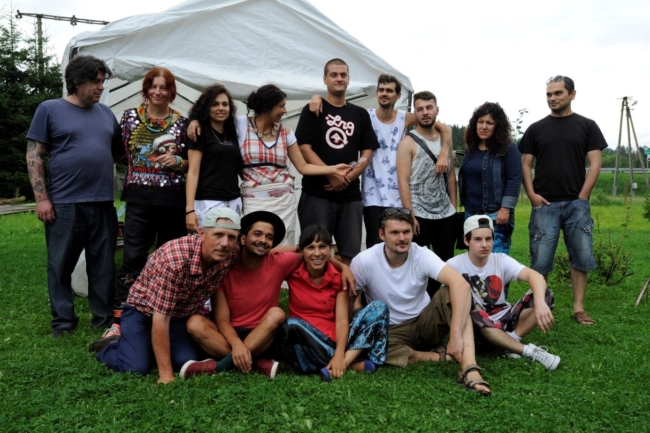JAW DIKH ART FOUNDATION
Romnijadałe Kali Berg
Romnijadałe Kali Berg
During my work, I co-operate and organizing projects with Roma communities.
The activities with Roma students and artist are very important to me. These are mostly artistic workshops for children and youth. Recently, I have also focused on Roma women.
These are more than just scenes I have captured in my paintings—it’s also the observation and realization of the role and place of women in the Roma world. As time progresses, women find more emancipation and self-consciousness, which allows them to improve their lives. I have dedicated a series to them, called “Romani Madonnas”. During the workshops, together with the participants, we often make collective patchwork art pieces. I think the most substantial value of these works next to their aesthetics is their authenticity.
The project “Romnija dałów Kali Berga” or “Women of Black Mountain” is our artistic enterprise based on the action of three Roma artists (Małgorzata Mirga-Tas, Delaine La Bas and Bogumiał Delimata) moving in the field of performance, painting and flamenco dance. We are connected by an ideological buckle of women crossing the borders of traditional Roma principles. This is a special situation because Roma womens position on the artistic scene and discourses is still marginalized. The inspiration for our project was our joint artistic experience that took place in Czarna Góra during the cyclical Jaw Dikh open air, where Roma and non-Roma artists were invited. Czarna Góra is a special place at the meeting point of Podhale and Spisz, where the Roma settlement is located.
This is the place where I grew up and currently live with my family. For me, these two words are beautiful and contain many meanings.
Kali Berga is associated not only with the place where for several years I have been organizing the annual artistic plein-air, but also with the people living there, the diversity of cultures, traditions, emotions and its history.
Sometimes, the strong dominance of women in Roma communities can be observed. Although the traditional model of a Roma family or group presents men as the alpha who decide and are the highest in the social hierarchy, women are more likely to change, educate, want to have their own voice, want a better future for themselves and their families. Strong, aware of their rights and valued Black Roma women – Kały Romnija. However, it can be seen that despite the fact that among the Roma, the actions of these women are noticeable, in the majority society, their voice is marginalized.
The aim of the project to conduct artistic workshops with children, youth and especially with Roma women in the Roma settlement. Such activities involve the whole community, not only women but men who, strangely, allowed to work with artists. An important element engaging women was dance, patchwork sewing (which could later decorate the homes of these women), and costumes.
Romski Pstryk- Romani Cklikc
Through our photographic project, the children take pictures of fairy tales or poems from Roma writers.
Romani culture is not well known among the Polish society. There is a lack of communication between Roma and non-Roma communities. Roma often lives secluded, closed in their world, distrustful of the outside world and society. They are commonly afraid of racism; the Roma argue that they experience discrimination and racism at every step. Romas are also lacking self-esteem, don’t believing in their own potential. There is a clear need for unconventional, innovative actions targeting to Roma, especially the children, which will enhance their chances of a more a positive social experience. No creative, developmental activities are offered for Roma children after school, they do not really build friendships with their peers in school, they do not visit each other after school.
The aim of “Romski Pstryk” is to break barriers and create space for mutual dialogues and understanding through art. Integrational workshops “Romski Pstryk” also promote Romani literature and reflects the need for creative and artistic development through Roma and non-Roma children. This project over the years proved to be a valuable experience for participating kids. Since its beginning in 2007, we have worked with around 700 children from various Roma settlements.
The originators, creators of Romani Click project from 2007 were Małgorzata Mirga-Tas and Marta Kotlarska, together with Roma activists Edyta Jaśkowiak, Madalena Szczerba and Piotr Mirga.
The project was created by the HARANHOS Roma Association.
Malowany Tabor ‘Painting Tabor’
Artistic workshop ‘Painted Tabor’ (2017) is a project when children and youth in Roma settlements built Roma Tabor and a wooden rolling stock. Its walls are covered with beautiful paintings, from black and white old photos, printouts found on the Internet, commemorating not only the tragic threads of Roma history but also the happier ones, the good moments in the life of the Roma. The participants also made beautiful collages, as well as hand-painted patchwork works depicting stories and motifs from the life of the Roma. The aim of the workshop was a joint meeting and to strengthen the sense of respect for their own origin and responsibility in building a positive image about Romas.
The project implemented by artist Małgorzata Mirga-Tas and two Roma activists; Edyta Jaskowiak and Kacper Germanski.
JAW DIKH! International Event of Roma Art in Czarna Góra
For 6 years, I have been the organizer of the international artistic plein-air “JAW DIKH”. The Jaw Dikh project is an annual outdoor artistic meeting. The participants are mainly Roma visual artists and non-Roma artists activists who are undertaking the Roma aspect in their art. They are artists such as painters, drawers, sculptors, photographers, multimedia artists, performers but also filmmakers, art critics and curators. Settings on the open air are not only artistic work but also the creation of a space for discussion, exchange experiences insights on the situation of the Roma in the world.

